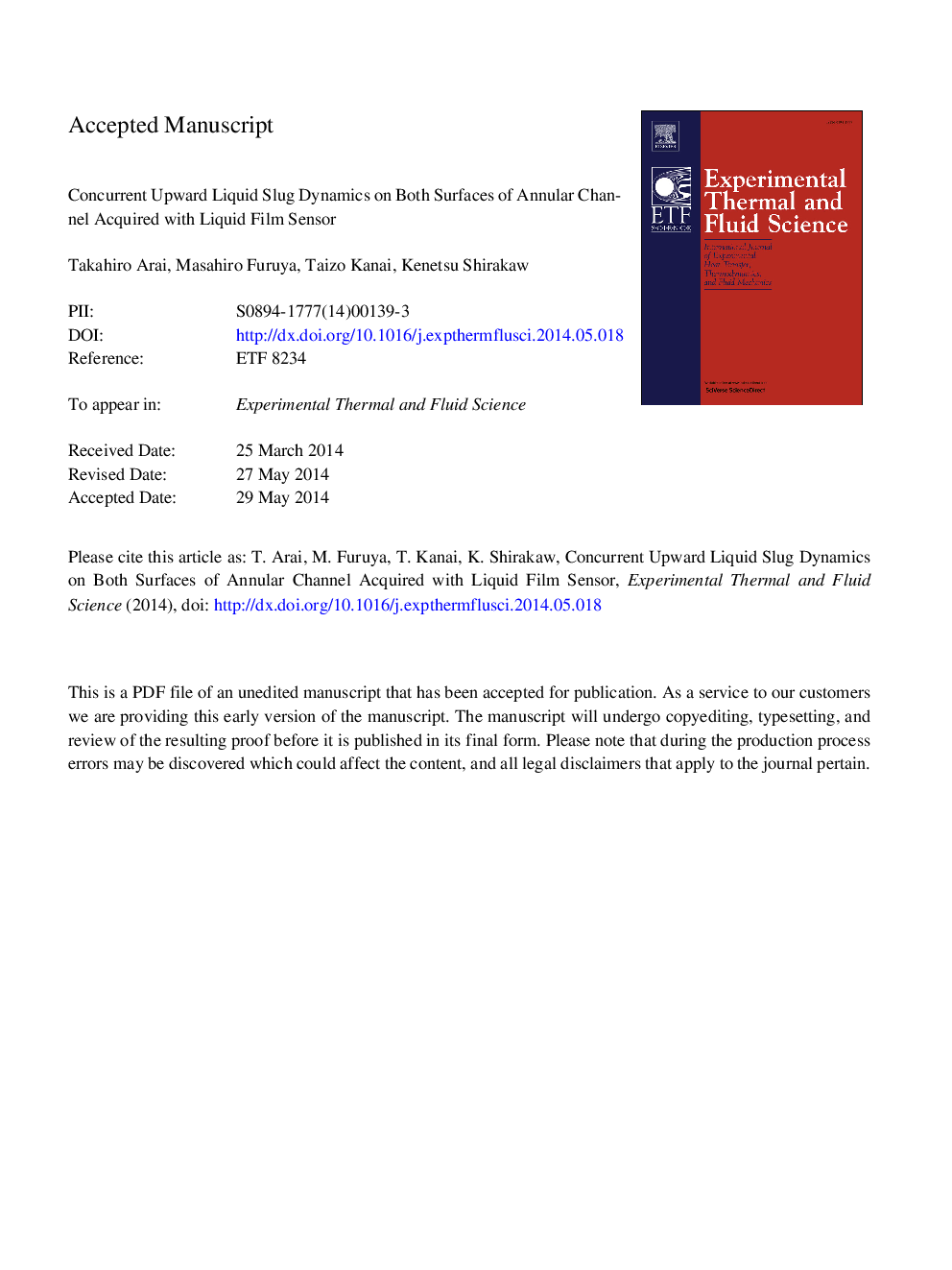| Article ID | Journal | Published Year | Pages | File Type |
|---|---|---|---|---|
| 7052355 | Experimental Thermal and Fluid Science | 2015 | 39 Pages |
Abstract
The interfacial behavior of upward liquid film flow is an important phenomenon to evaluate interfacial transfer accompanying the entrainment and deposition of droplets. This research focuses on a vertical annular channel, and an air-water liquid film flow experiment was conducted under atmospheric pressure conditions. The diameters of inner and outer pipes in the annular channel were 12 and 18Â mm respectively. The experiment featured multi-point electrode sensors installed in both the inner and outer pipe surface at the same height, and the ability to measure the liquid film distribution on both surfaces in the annular channel simultaneously. As for the sensor structure, 10Â ÃÂ 32 measuring points were arranged in a lattice pattern on the sensor surface and the spatial resolution was 2Â ÃÂ 2Â mm, hence the liquid film thickness distribution could be measured rapidly, at over 1250 slices per second. Since the sensor was manufactured by a flexible multilayer substrate, it was applicable to a cylindrical channel surface. In the experiment, water was supplied from the inner pipe surface and uniformly distributed in the circumferential direction, whereupon liquid film distributions were measured 300Â mm downstream from the water supply position. The time series data of the liquid film distribution demonstrated circumferential distributions of liquid film thickness and interfacial wave velocity. When the superficial gas velocity was smaller than 20Â m/s, a liquid film formed on both inner and outside pipe surfaces, regardless of the superficial liquid velocity. With increasing superficial gas velocity, the film thickness of the outer pipe surface became thinner than that of the inner pipe surface. Measurement of the liquid film thickness on both surfaces of the annular channel also showed that a liquid slug with wavelength of several millimeters passed concurrently through both surfaces in the annular channel.
Related Topics
Physical Sciences and Engineering
Chemical Engineering
Fluid Flow and Transfer Processes
Authors
Takahiro Arai, Masahiro Furuya, Taizo Kanai, Kenetsu Shirakawa,
